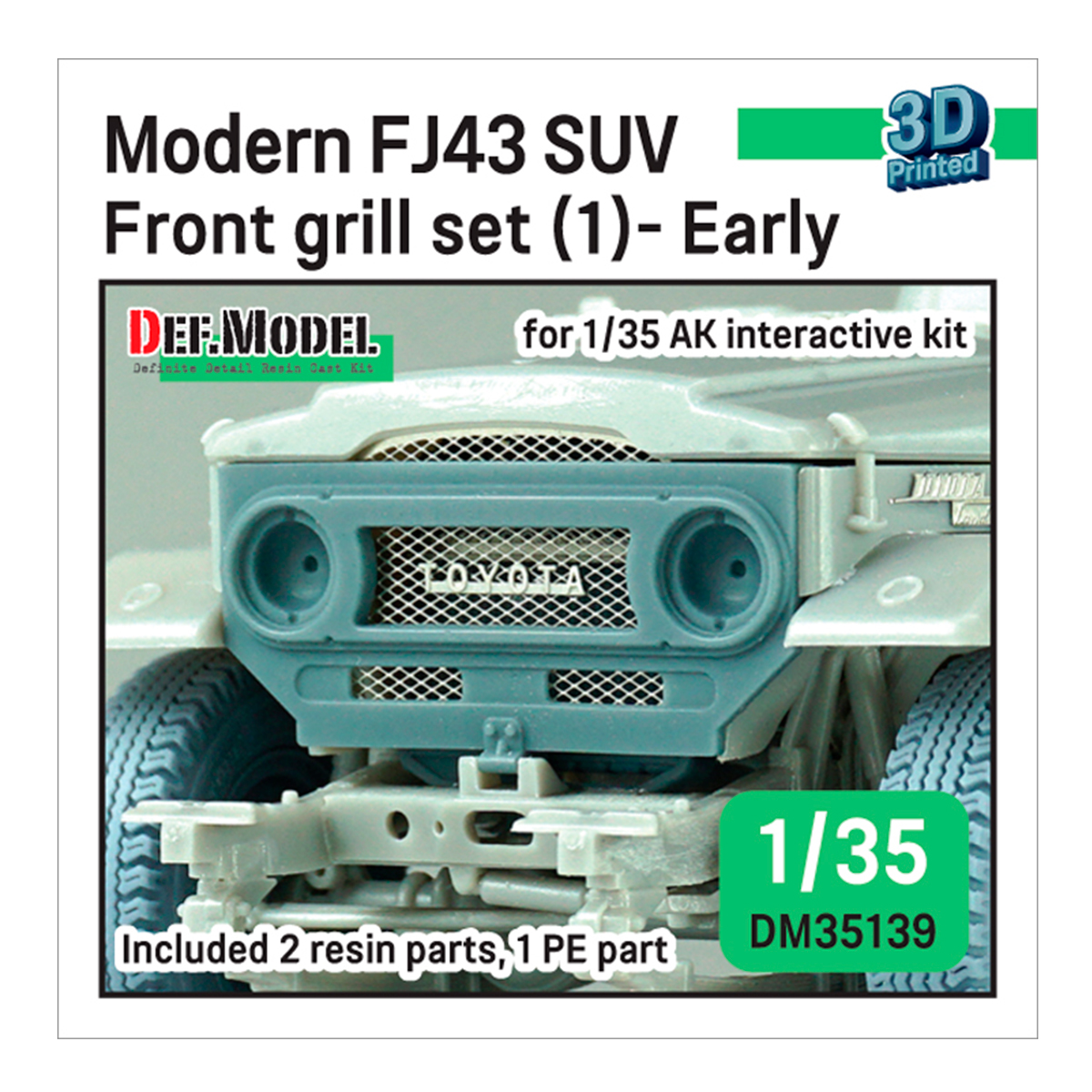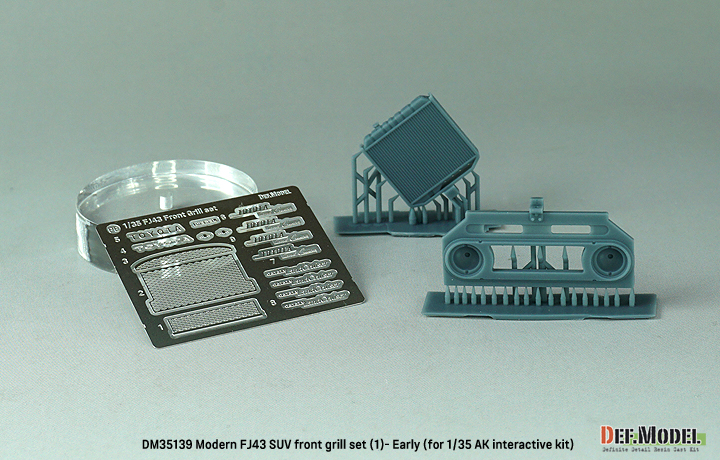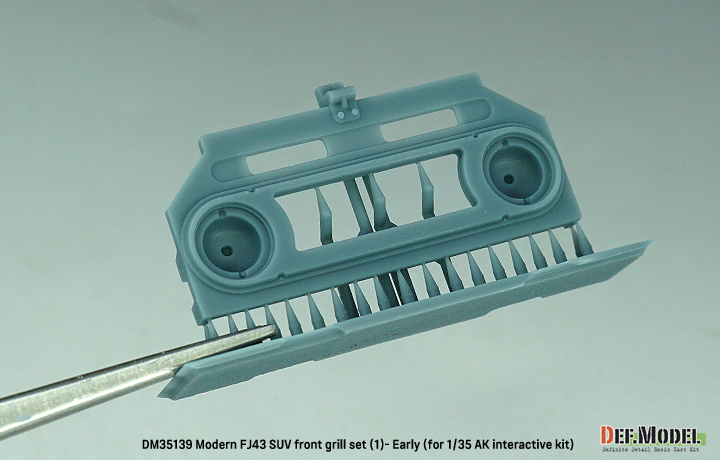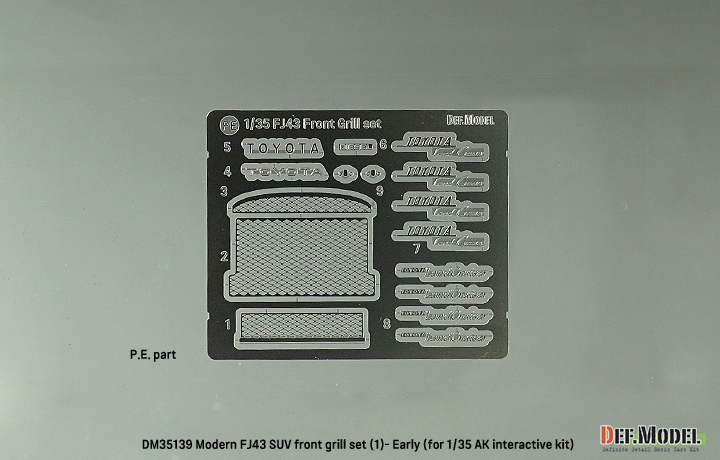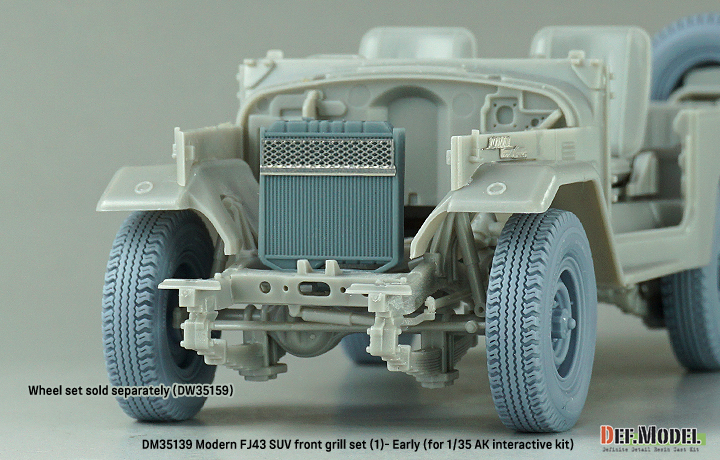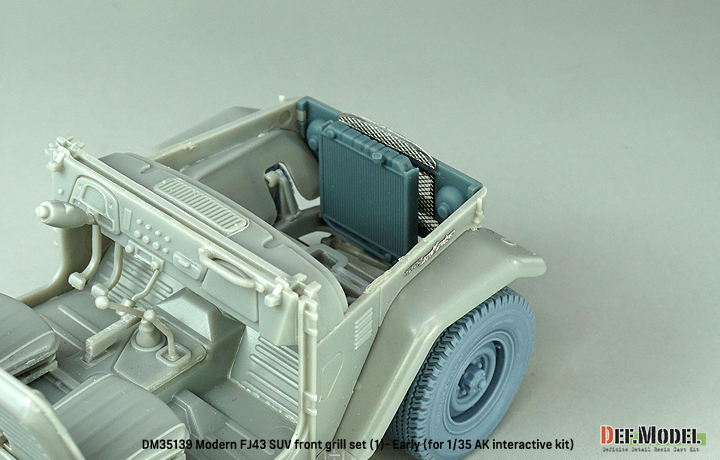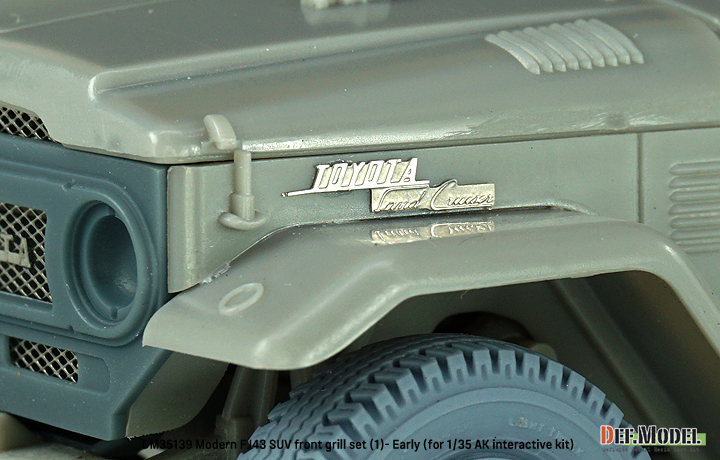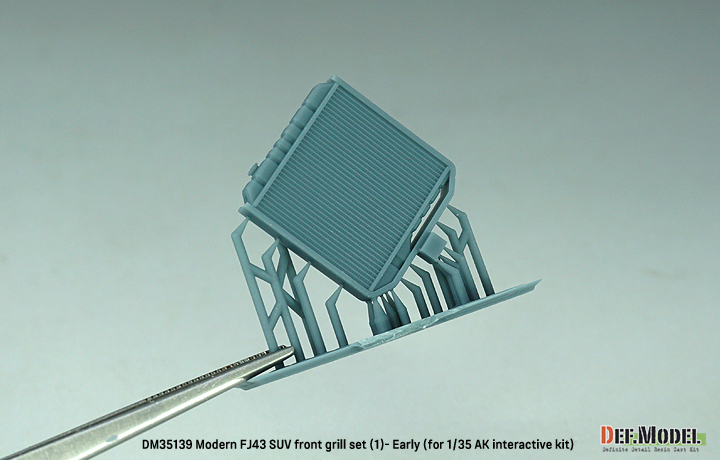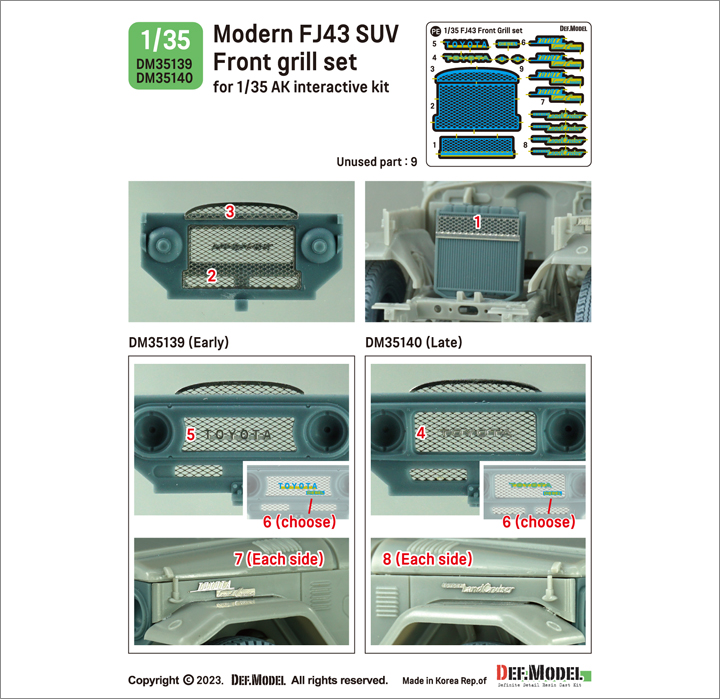FJ43 front grill set (1) Early (for 1/35 AK Interactive kit)
9,10€
Sin existencias

*Please check our Privacy Policies to see how to we use your personal data.
*Por favor revisa nuestra Política de Privacidad para ver como tratamos tus datos personales
ENGLISH
ESPAÑOL
- Modern FJ43 SUV front grill set (1) -Early for 1/35 AK interactive kit
- Designed to replace AK interactive FJ43 SUV kit front grill part.
- The front grill part is a 3d printed part.
- Total 2 resin parts and 1 P.E. plate included.
- Set de parrilla delantera del FJ43 SUV moderno (1) -Early for 1/35 AK interactive kit
- Diseñado para reemplazar la parrilla delantera del kit AK interactive FJ43 SUV.
- La parrilla delantera es una pieza impresa en 3D.
- Total 2 piezas de resina y 1 placa P.E. incluidas.



